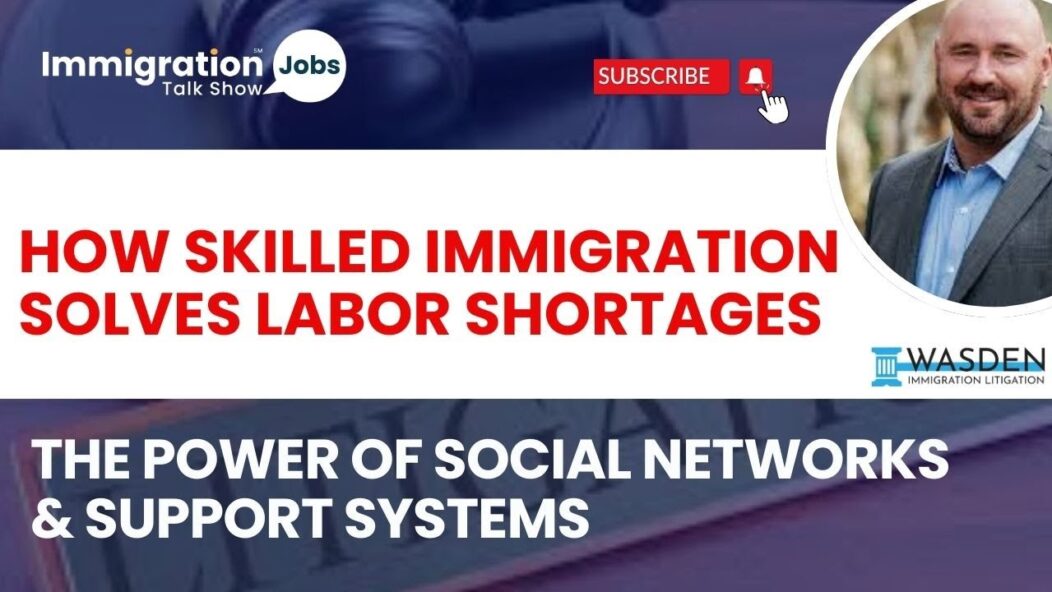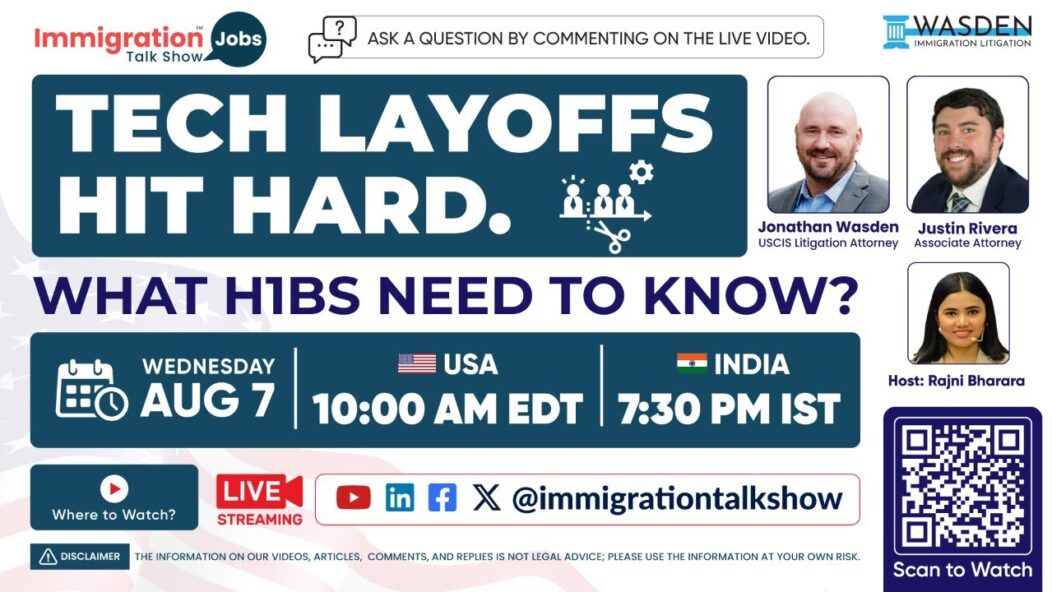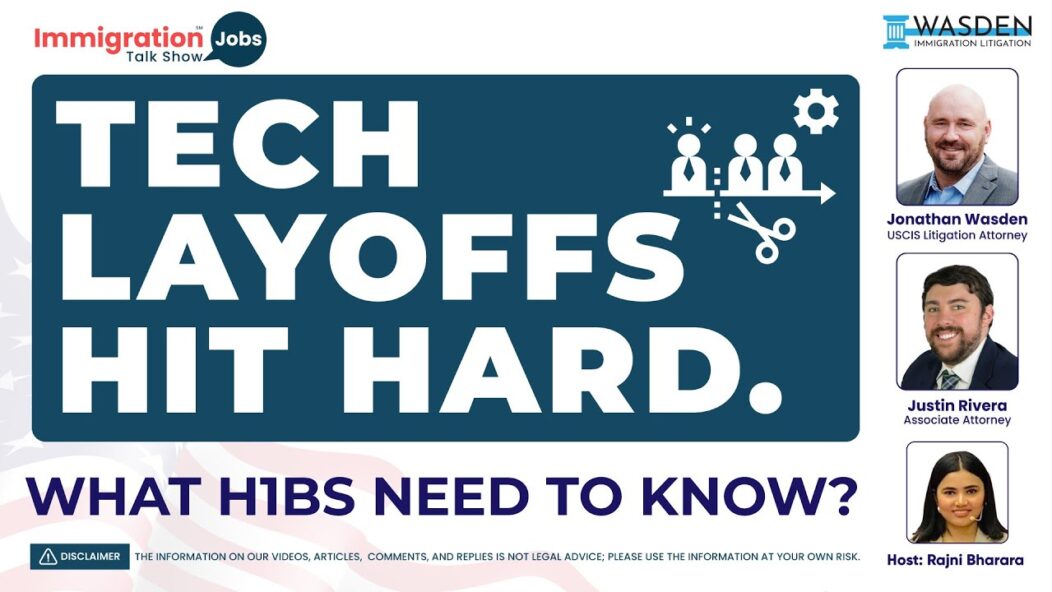For individuals holding H-1B non-immigrant status, understanding the intricate processes and regulations surrounding employment, residency, and international travel is crucial. The U.S. Citizenship and Immigration Services (USCIS) website is the most authoritative and reliable source for all H-1B-related information. This article breaks down key takeaways from USCIS, offering a comprehensive guide to help H-1B workers navigate their status, apply for lawful permanent residency, and manage various scenarios they may encounter.
Key Takeaways:
- Employer Flexibility: H-1B workers can change employers immediately after the new employer files a nonfrivolous H-1B petition with USCIS.
- Path to Permanent Residency: The I-140 petition is vital for securing a priority date, which remains valid even if the employer withdraws the petition after 180 days.
- Grace Period Post-Termination: H-1B workers typically have a 60-day grace period to find a new job or adjust their status after employment termination.
- H-4 Dependent Work Authorization: Under certain conditions, H-4 spouses may apply for an Employment Authorization Document (EAD).
- International Travel Requirements: Proper documentation, including a valid H-1B visa and potentially Advance Parole, is necessary for international travel and re-entry.
- Common Pitfalls: Avoiding common issues like documentation errors and missed deadlines is critical for maintaining H-1B status.
Historical Context:
The H-1B visa program was introduced under the Immigration Act of 1990, designed to allow U.S. employers to hire foreign professionals in specialty occupations. Over the years, legislation such as the American Competitiveness in the Twenty-First Century Act (AC21) has enhanced the flexibility of the H-1B program, particularly by allowing greater mobility for workers and providing clearer pathways to lawful permanent residency. These developments reflect the evolving needs of the U.S. labor market and underscore the importance of retaining global talent.
Employer Changes Under H-1B Status
The ability to change employers under the H-1B visa is a cornerstone of the program’s design. The American Competitiveness in the Twenty-First Century Act (AC21) facilitates this by allowing H-1B workers to switch employers as soon as a nonfrivolous petition is filed by the new employer. This provision has greatly increased job mobility and reduced the risks associated with being tied to a single employer.
H-1B portability allows workers to start a new job as soon as the new employer files the necessary petition, offering significant flexibility.
Securing Lawful Permanent Residency (LPR)
An approved I-140 petition is a critical milestone for H-1B workers seeking permanent residency. If the petition has been approved for at least 180 days, the priority date remains secure even if the employer withdraws the petition. This security is crucial as it allows H-1B workers to continue their LPR journey without being dependent on the original petitioning employer.
The I-140 petition is central to an H-1B holder’s journey toward obtaining a Green Card and securing a permanent place in the U.S.
Managing Employment Termination
The 60-day grace period following employment termination is a vital safeguard for H-1B holders. During this period, they have the opportunity to either find a new job, apply for a change of status, or prepare to leave the U.S. This flexibility is designed to prevent sudden loss of status and allows workers time to make informed decisions about their future.
After employment termination, H-1B workers have a grace period of 60 days to navigate their next steps without falling out of status.
Work Authorization for H-4 Dependents
The ability for H-4 spouses to work is a significant benefit, especially for families relying on dual incomes. The eligibility for an Employment Authorization Document (EAD) is generally linked to the H-1B principal holder’s status, such as having an approved I-140 petition. This provision supports the economic stability of H-1B families and allows H-4 spouses to pursue their professional goals.
H-4 spouses can apply for work authorization under specific conditions, providing financial and career opportunities for dependent family members.
International Travel and Re-Entry
H-1B workers planning to travel outside the U.S. must ensure they have all necessary documentation, including a valid H-1B visa stamp and, if applicable, Advance Parole. Failure to carry the correct paperwork can lead to complications upon re-entry, emphasizing the importance of thorough preparation before any international travel.
Proper documentation is essential for H-1B workers traveling internationally to ensure seamless re-entry into the U.S.
Official USCIS Guidance for Individuals on H-1B Non-immigrant Status
The official U.S. Citizenship and Immigration Services (USCIS) website offers the most credible and comprehensive information for individuals on H-1B non-immigrant status. It is the authoritative source for understanding your rights, responsibilities, and available pathways if you are an H-1B visa holder. This article summarizes the key insights provided by USCIS regarding forms, eligibility, and various scenarios H-1B workers may face.
Available Forms and Situations
- Form I-129: Petition for a Non-immigrant Worker. This form is used by employers to petition for H-1B workers.
- Form I-140: Immigrant Petition for Alien Worker. This form is crucial for H-1B holders aiming for lawful permanent resident (LPR) status.
- Form I-485: Application to Register Permanent Residence or Adjust Status. This is the final step in the Green Card process for H-1B holders.
- Form I-765: Application for Employment Authorization. This form is used by H-4 dependents to apply for work authorization.
- Form I-797: Notice of Action. This is a receipt or approval notice from USCIS, often related to the above forms.
Common Scenarios:
- Changing Employers: An H-1B holder can change employers as soon as the new employer files a nonfrivolous H-1B petition with USCIS. No need to wait for approval.
- Employment Termination: If terminated, H-1B workers generally have a 60-day grace period to find a new employer, change status, or prepare to leave the U.S.
- Travel: H-1B holders can travel internationally but must ensure they have all necessary documentation to re-enter the U.S. smoothly.
What Happens When a Petition is Approved?
When an H-1B petition (Form I-129 or Form I-140) is approved, the H-1B worker either gains employment with a new employer or secures their path to lawful permanent residency, depending on the form filed. Approval of Form I-140 is a significant step, especially if it has been approved for 180 days or more. Even if the original employer withdraws the petition, the worker retains their priority date, which is crucial for adjusting status in the future.
Eligibility for Employment Authorization (EAD)
H-1B holders’ spouses (H-4 dependents) may be eligible for an Employment Authorization Document (EAD) under specific conditions, such as if the H-1B principal holder has an approved I-140 or has extended their H-1B status beyond the six-year limit. Filing Form I-765 allows H-4 dependents to legally work in the U.S.
Pending Forms and Permanent Status
A pending I-485 application means that the individual is in the final stage of the Green Card process. During this time, the individual may be eligible for advance parole (travel permission) and work authorization. Permanent resident status (Green Card) is granted once USCIS approves the I-485 application, allowing the individual to live and work permanently in the U.S.
Conclusion:
The H-1B visa offers a valuable pathway for skilled foreign professionals to contribute to the U.S. economy while pursuing their career and residency goals. Understanding the nuances of H-1B regulations, including job changes, LPR applications, and dependent family rights, is essential for maintaining status and planning for the future. The USCIS website remains the most reliable source of information for navigating these complex processes.
FAQs
- Can I change employers while on an H-1B visa?
Yes, as long as your new employer files a nonfrivolous H-1B petition, you can start working immediately.
- What happens to my I-140 if my employer withdraws it?
If your I-140 has been approved for 180 days, the priority date is retained even if your employer withdraws the petition.
- How long can I stay in the U.S. after my H-1B employment ends?
You have a 60-day grace period to either find a new job, change your visa status, or leave the U.S.
- Can my H-4 spouse work in the U.S.?
Yes, if certain conditions are met, such as the H-1B principal having an approved I-140 or extending beyond the six-year limit.
- What documents do I need for international travel on H-1B?
You need a valid H-1B visa stamp, an approved I-797 petition, and possibly an Advance Parole if adjusting status.
- What are common pitfalls in the H-1B process?
Common issues include errors in documentation, failure to meet deadlines, and misunderstanding eligibility requirements for extensions and LPR status.
Contact Us
For more information or to schedule a consultation, visit our website at Wasden Law, Our experienced litigation attorneys are ready to fight for your rights and ensure your immigration journey is as smooth as possible.
🔍 Have questions or need advice? Drop a comment below! Our team is here to help. 🗣️💬
✉️ Connect with us for personalized guidance and support. Let’s navigate your immigration journey together. 🌐📩
💡 Curious about your specific case? Ask us in the comments and get expert advice tailored to your needs. 🧑⚖️📝
Disclaimer:
The information provided in this article is for general informational purposes only and does not constitute legal advice. While we strive to ensure the content is accurate and up-to-date, it is not a substitute for professional legal consultation. Immigration laws and regulations are subject to change, and their application can vary based on specific circumstances. We recommend scheduling a consultation with us to obtain advice tailored to your individual situation. The authors and publishers of this article are not responsible for any actions taken based on the information provided herein.
How useful was this post?
Click on a star to rate it!









